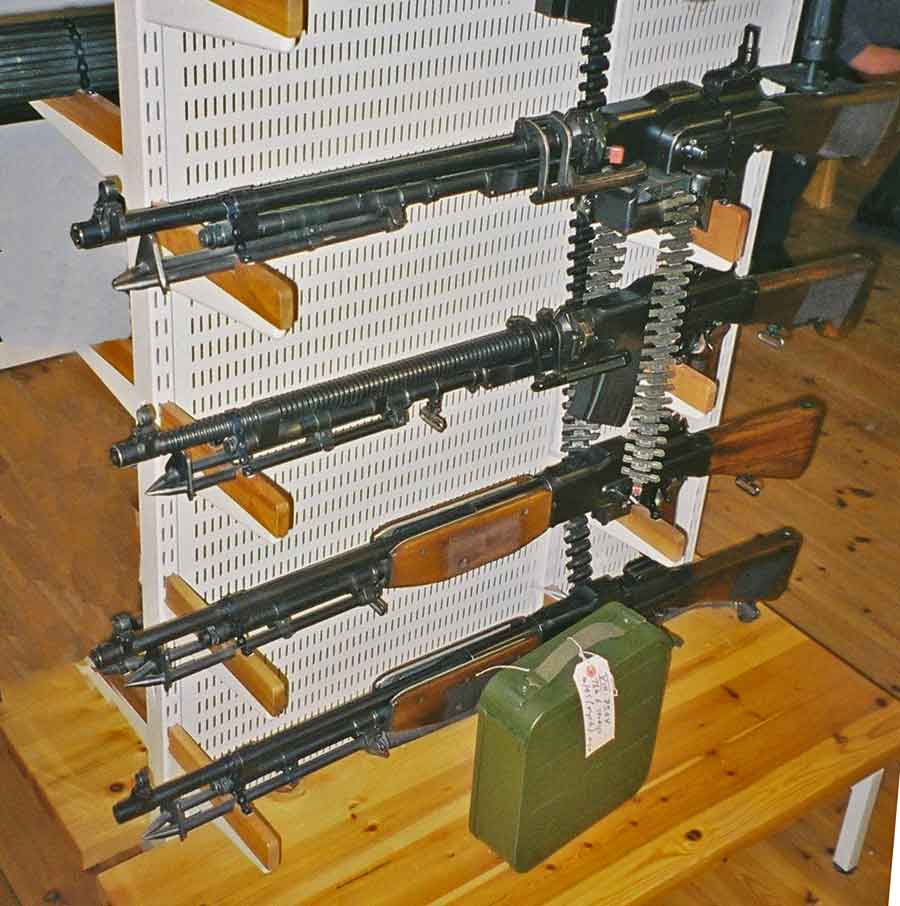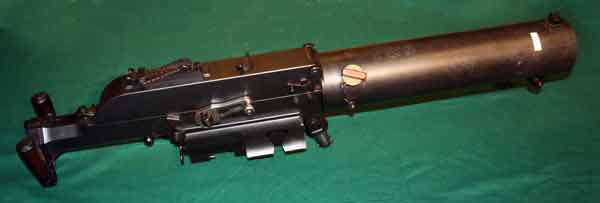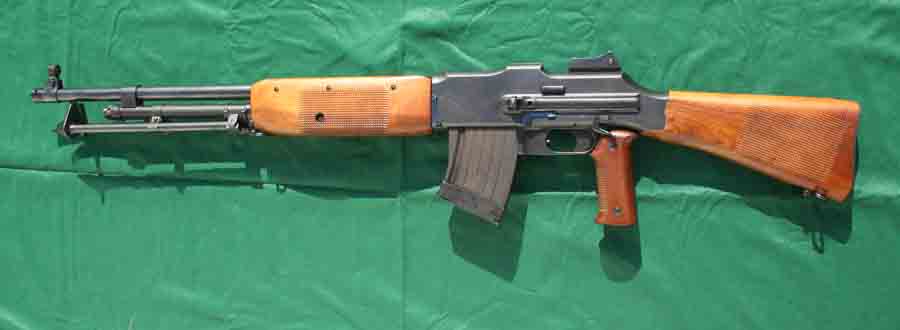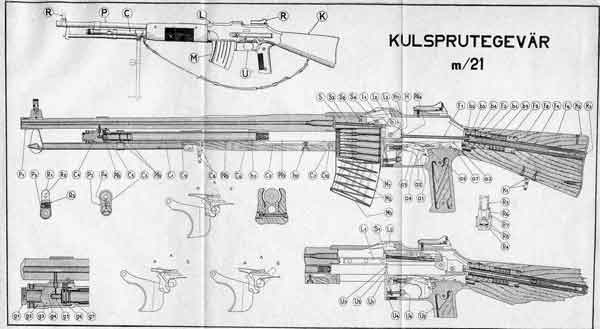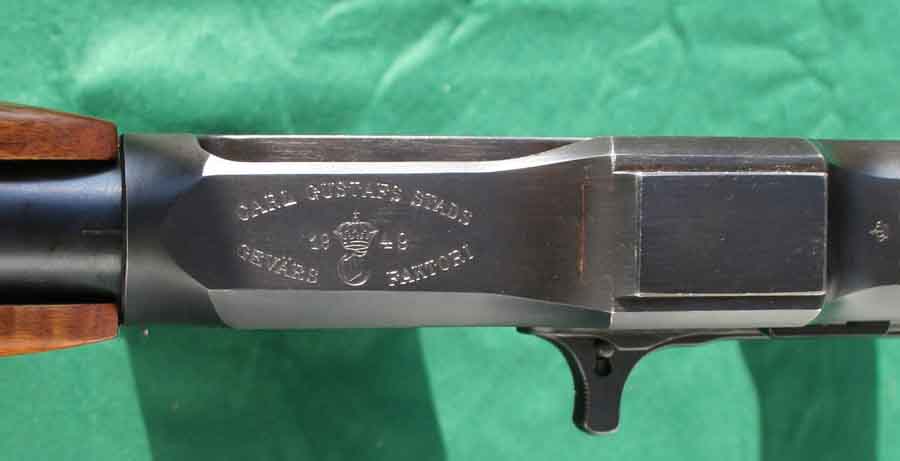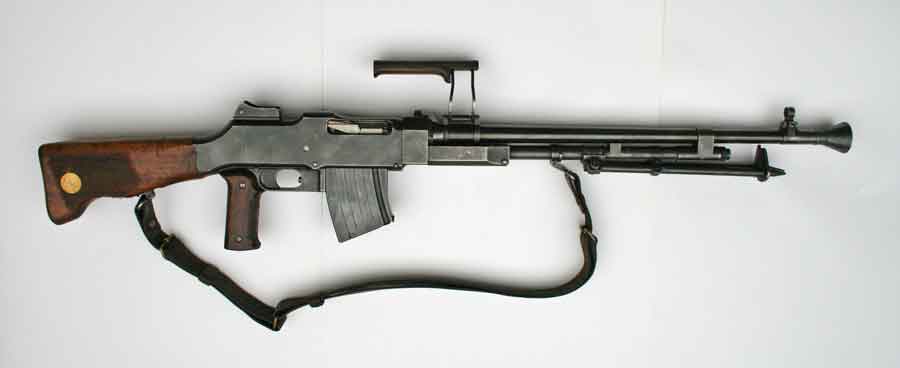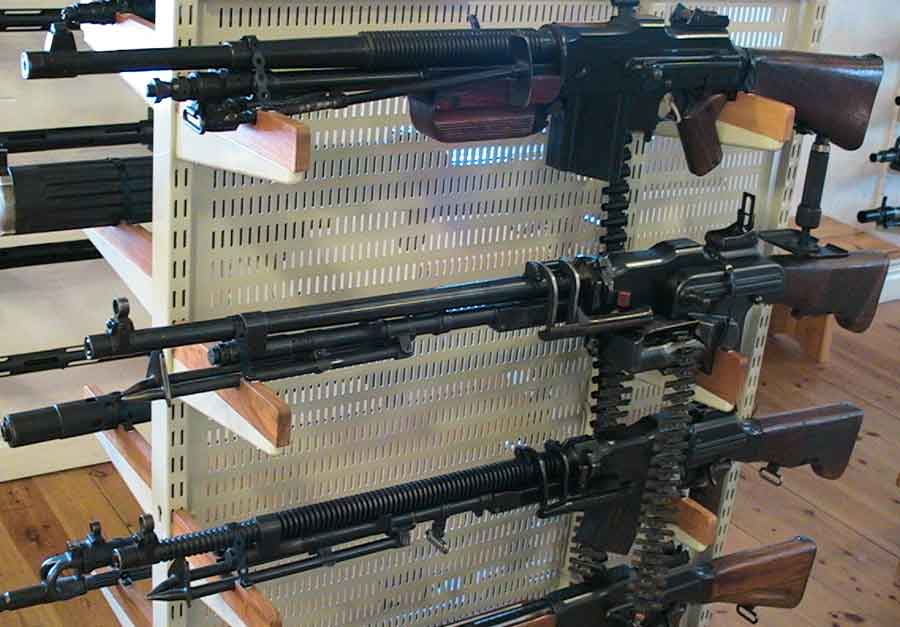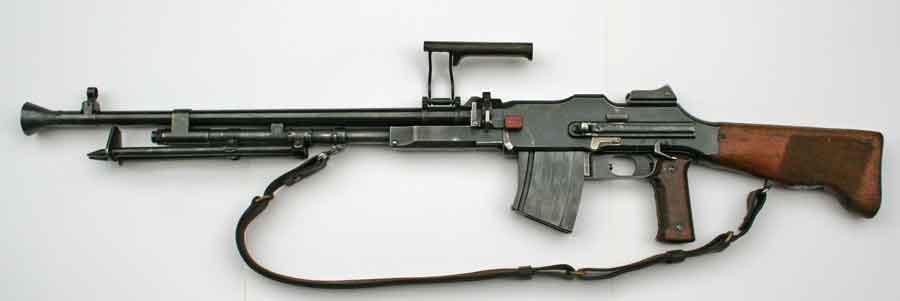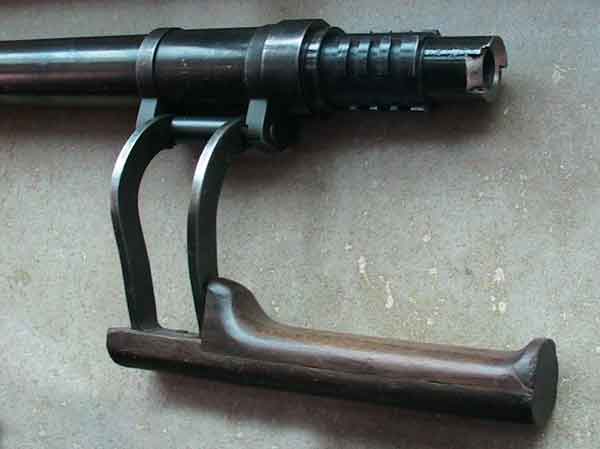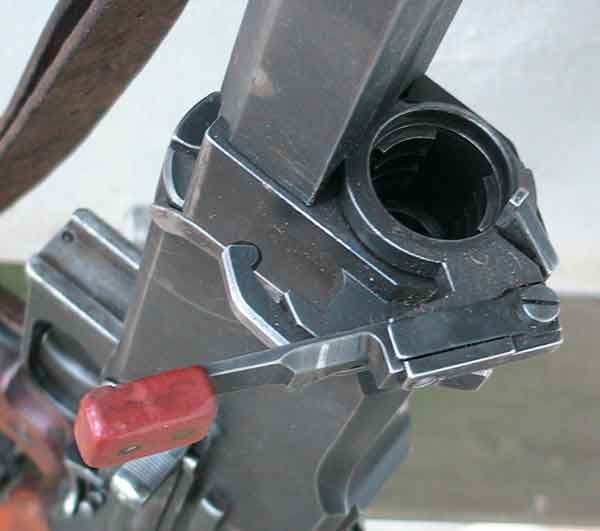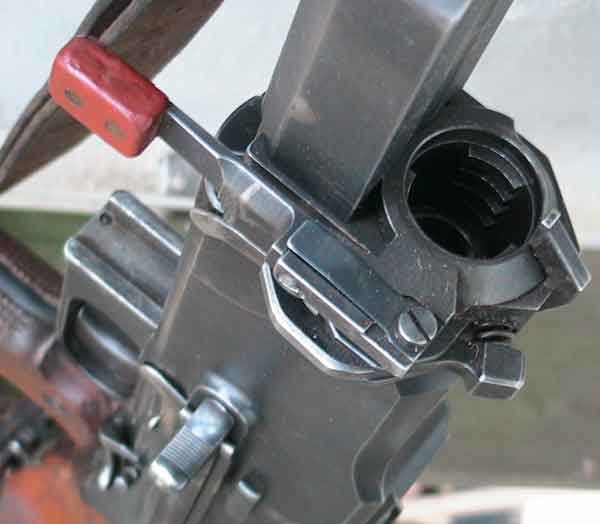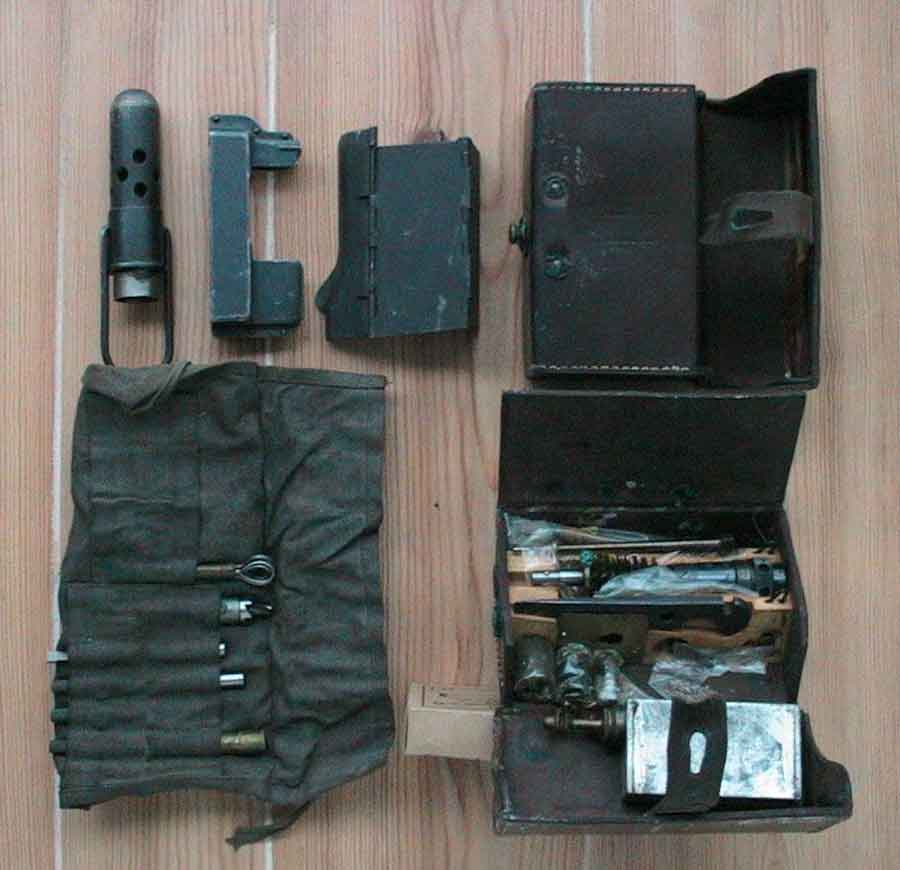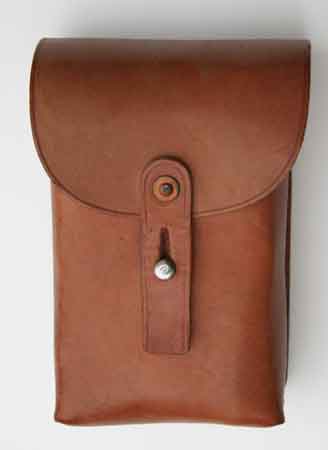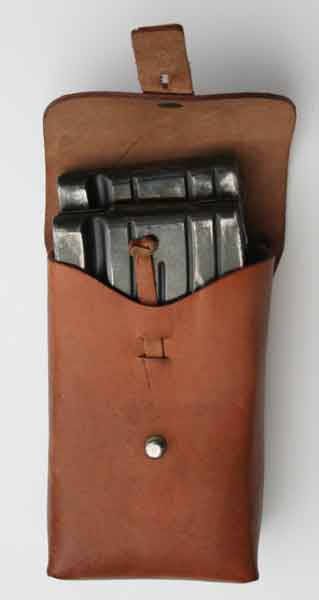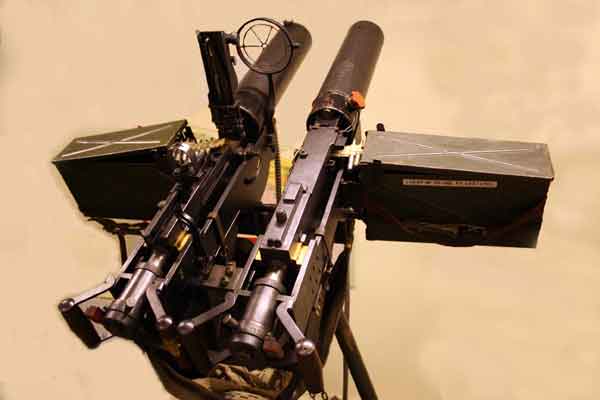|
The
Browning Calibre .30 Automatic Rifle
(BAR)
was developed by John Moses
Browning in 1917 to meet the U.S.
demands for an automatic rifle in the Great War.
 |
The U.S. BAR
M1918 |
The
Browning’s patent drawing can be seen below.
The BAR
was made by Colt, Winchester and Marlin Rockwell during WW1. The original
BAR has no bipod. The flash hider is simple tube and the sight is similar to
the Enfield rifle M1917.
Some
82 000 BAR
M1918
were made
in USA before the end of WW1.
The
Swedish BAR:s are quite similar to the U.S. BAR M1918 except that it has a
separate pistol grip and are all made in the Swedish m/94 6.5 mm calibre.
The Swedish modification was developed by the Swedish government arsenal,
Carl Gustaf Stads Gun Factory in Eskilstuna, Sweden.
|
